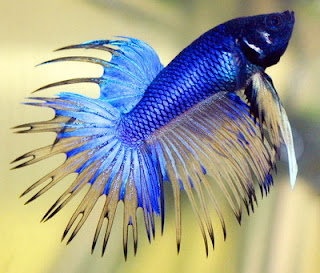Because the Betta Splendens is an attractive fish, more and more people become interested in betta for sale. Thus, many individuals also decide that they want to learn how to breed betta fish. This article focuses on betta breeding tips for wannabe betta breeders.
 |
| Photo by: andyram1 |
Here are several betta breeding tips that will lead you to the path of becoming a successful breeder:
1. Acquire enough knowledge.
The very first thing you'll have to do if you want to raise bettas is to do your research and study. You should get complete information on the species, in this case, betta splendens, what bettas eat, how to care for a betta, and the likes. Once you have enough information, you can start taking care of bettas. Of course, before you think of breeding betta splendens, you should gain experience on caring for them first.
2. Think about your goal.
Before you tell yourself that you really want to understand how to breed betta fish, you first have to ask yourself why you want to rear betta fishes. You should be aware that bettas usually lay hundreds of eggs, and, if you don't have tanks that are big enough, big amounts of money to buy food, and so on, those bettas can end up dead, and, your money gets wasted.
The following are some of the questions you should have clear answers to: do you want to breed betta fish because you want to sell them, or do you just want to participate in fish shows? Do you feel that betta breeding is a hobby you can't live without? Are you just interested in taking care of so many bettas to fill up giant aquariums in your home for decoration purposes?
Once you have determined what your actual goal is, that is the only time that you should really strive hard to learn betta breeding tips.
3. Set up your fish tanks properly.
As soon as you've made the decision, the next step of how to breed betta fish is to prepare your fishes' homes the correct way. Two big tanks are needed if breeding betta splendens is your plan. There should be a detachable divider between those two aquariums.
Each of the tanks should also be filled with around five up to ten gallons of H20. There should also be filters and heaters on those tanks, aquarium plants, reefs, etc.
4. Purchase healthy betta splendens.
A few words of advice for those who want to gain knowledge on how to breed betta fish: when you see betta for sale, do not immediately buy them without applying these betta breeding tips: get a male betta and a female betta that have almost the same size. You should also find a pair with good genes. Of course, if you purchase the pair from a reputable breeder, you can most of the time be sure that they have healthy genes that usually result to healthy fry.
It is best to let your bettas adjust to their homes for a couple of months before letting your male and female betta meet each other and start multiplying. Once you see that your female and male are ready to produce eggs, you should also devote a few hours per day just to care for them, most especially, of course, for the eggs they propagate.
__________
About The Author
Karen Winton is an animal lover. To know how to properly care for your bettas, read: http://www.dp-db.com/betta-fish-secrets. If you are an honest to goodness betta enthusiast, see: http://www.dp-db.com/betta-lovers-guide.





